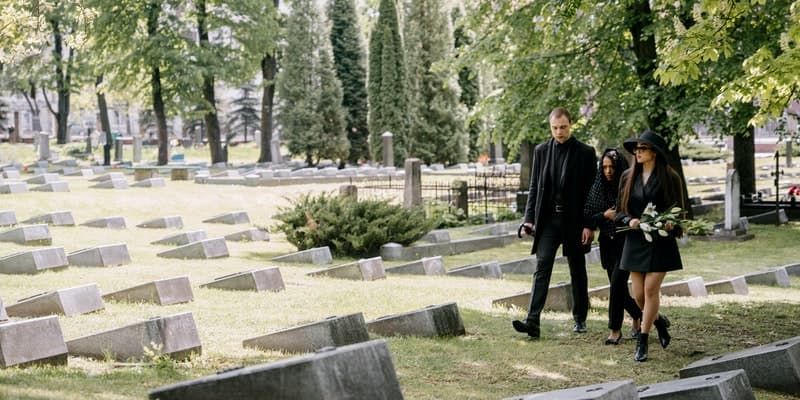A Complete Guide to Understanding the Cremation Process
A Complete Guide to Understanding the Cremation Process

Cremation has become a more popular choice for final arrangements in recent years. But what does the cremation process actually entail? This guide will provide you with all the information you need to make an informed decision about cremation. We'll cover everything from the basic steps of the process to what happens to the ashes after cremation. By understanding the cremation process, you can make sure that your loved one's final wishes are carried out exactly as they wanted.
What you need to know about cremation
Cremation is the process of reducing a deceased person's body to bone fragments using high temperatures. The process usually takes place in a crematorium, which is a special facility designed for this purpose.
Cremation has become a popular alternative to traditional burial in recent years, and it offers many benefits. For one, cremation is much less expensive than burial. It also requires less land, which is important in an increasingly urban world. Cremation also allows for more flexibility when it comes to memorialization and funerals.
If you are considering cremation for yourself or a loved one, it is important to understand the process and what it entails.
What is cremation?
Cremation is the process of reducing a body to its ashes through high temperatures. The process usually takes place in a crematorium, which is a special facility designed for this purpose.
Cremation has been around for centuries and was once the only way to dispose of a body. Today, it is one of several options available to those who wish to be cremated.
How does cremation work?
Cremation works by using high temperatures to reduce a body to its ashes. The process usually takes place in a crematorium, which is a special facility designed for this purpose.
What are the benefits of cremation?
There are several benefits of cremation. One is that it is a less expensive option than a traditional burial. Cremation also allows for more flexibility in terms of where the ashes can be scattered or kept. And, some people believe that cremation is a more environmentally-friendly option than burial.
What are the drawbacks of cremation?
While cremation does have some benefits, there are also some drawbacks. One is that it is a permanent decision – once you or your loved ones are cremated, there is no way to change your mind. Cremation also requires the use of special equipment and facilities, which can add to the cost.
Step-by-Step Cremation Process
How much do you know about the cremation process and all that it entails? If you haven’t ever had to plan cremation services in West Valley City, UT for a loved one, you might not know the first thing about this process. You should make it a point to learn more about it before you have to map out a loved one’s cremation services for the very first time. Check out our complete guide to understanding the cremation process below.
A person is properly identified at the very start of the cremation process.
Before the West Valley City, UT cremation process can officially begin, a crematory will need to properly identify a person’s body. Each crematory takes a different approach to do this, but generally speaking, crematories will all have a system set up that will allow them to double and triple check a person’s identity. They’ll also get their hands on the authorization that they’ll need from a person’s family to cremate their body. All of this must take place prior to a person’s cremation getting underway.
A person’s body is then prepared for their cremation to begin.
After a crematory has identified a person’s body and gotten authorization from their family to cremate it, they’ll begin to prepare the body for cremation. They’ll do this by removing any metal from inside or outside of a person’s body. They’ll also do it by taking out any medical devices. And once these things are done, a person will be put into the clothing that their family requested they wear during their cremation. They’ll also be placed inside a combustible cremation container.
A person’s body is moved into a cremation chamber for their cremation.
Once a person’s body is ready for a cremation to begin, a crematory will heat up their cremation chamber. This chamber will reach temperatures of anywhere from 1,500 degrees to 2,000 degrees Fahrenheit. A crematory will then move a person’s body into their cremation chamber and let the heat inside of it get to work. This heat will break a person’s body down to cremated remains and bone fragments within about two hours in most cases.
A person’s cremated remains are processed and then handed to their family.
Towards the end of a person’s cremation process, a crematory will gather their cremated remains and process them accordingly. They’ll use special tools and machinery to break the remains down so that they’re tiny and uniform in size. They’ll then fill out all of the proper paperwork before eventually releasing the remains back to a person’s family. The family can then decide what to do with them next. They can take them home in an urn, bury them in a cemetery, scatter them in a special place, or do any number of other things with them.
Now that you know everything you need to know about the cremation process, you should feel more comfortable with the idea of planning cremations for your loved ones. Contact a funeral home that you know you can trust to conduct cremation services for you and your family.
No matter the reason, choosing cremation is a personal decision that should be based on what is best for the individual and his or her loved ones. If you are considering cremation, please contact us to learn more about our services and how we can help make this process as easy and stress-free as possible.











